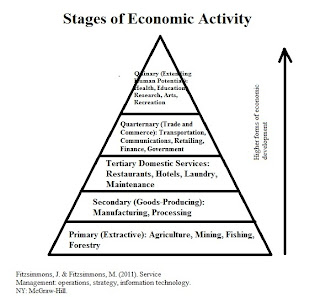 |
| Mona Lisa 1503-1506 |
Mona Lisa (1503-1506) by Leonardo da Vinci is one of the
world’s most famous paintings that have drawn interest for many years from different
cultures around the world. The poise of
the painting has created a fascination with people from all lifestyles. Mona Lisa is seen as perfectly posing in a
background of illusion. Together the painting offers a glimpse of a woman who
is content in life with a touch of interest in her viewer. The work is seen as
a masterpiece of illusion and light. Yet, there might be something more
shocking about the Mona Lisa we are not consciously aware of.
The conventional interpretation of painting is believed by
some art scholars to be of Lisa Gherardini, the wife of Francesco del Giocondo.
Lisa was from the Gherardini family of Florence and her picture commissioned
during the Renaissance. In her early life she married a silk merchant who
eventually became a local official. They had five children together before he
passed away. It is believed that they had ties to the Medici family even though
they had lost much of their prestige over time. No one knows for sure who she
actually was.
The painting is interesting in that Leonardo used a pyramid
design to place the main figure in center. Above her folded hands one can see a
glow of light that helps to create a spherical illusion around the center of
her body. The background is an aerial perspective that adjusts the picture
image and colors slightly as one move closer and further away. It creates an
additional illusion of depth based upon the sensitivity of the eye. Those who
are more sensitive can see a slightly different picture based upon the depth of
their focus.
This depth of focus was further highlighted when Cotte, the
founder of Lumiere Technology, developed a 13 ultraviolet spectrum camera. The
forearm and write were actually holding a drape. There were a couple of
mistakes in the painting such as a blotch on the corner of the eye and chin that
was actually varnish mistakes and not sickness as commonly thought. In addition, the elbow had to
be repaired from a rock thrown at the picture in 1956.
According to Italy's National Committee for Cultural Heritage who magnified Mona Lisa’s eyes, you can find letter LD in the right eye (Leonardo
da Vinci) and CE or B- (unknown marking) in the left eye. It is believed that
the letters represent the author and the model. Leonardo believed in the eyes
as the “doors of the soul” and a special means of communication. It would be
natural for such a person to use the eyes as a way of encoding information
about the author and its subject.
Others have argued that if you match up Leonardo’s portrait
from the left half of his face with the right side of Mona Lisa’s face you will
find a match. Of course, you have to flip it in the mirror. A potential reason
why Mona Lisa was so oddly charming was that it was Leonardo himself at a
younger age. If so, it would be a statement of perception about how what we see
is not always everything there is to know. Leonardo was considered a handsome
youth with wide appeal and if we change our draping and few other trivial things
we actually are viewed as something else. No matter how one views another they fail to miss the deeper complexity of human life.
The portrait of the female version of da Vinci as a
Renaissance “looking glass self” would make sense. We define ourselves by our
social interaction with others. Leonardo sayings of “doors of the soul”, using mirrors in codes, and being left handed may lend to the concept that we are reflections
of what we see in the world. His very creativity being drawn from the
differences of how he used his brain and the giftedness by which he felt the
world. One must wonder if that great smirk is of him looking upon himself as
something different than anyone else can see it—a higher form of conscious
awareness.
Is there a reason why scholars call it an “androgynous”
look? Androgynous defined as combined of male and female. Was he the thinking and feeling man? Perhaps the da Vinci’s code is to be able to
trace all of his works and stories back to the man who no one truly knew. Can
you unlock da Vinci’s code by opening the door? To date...no one has.

